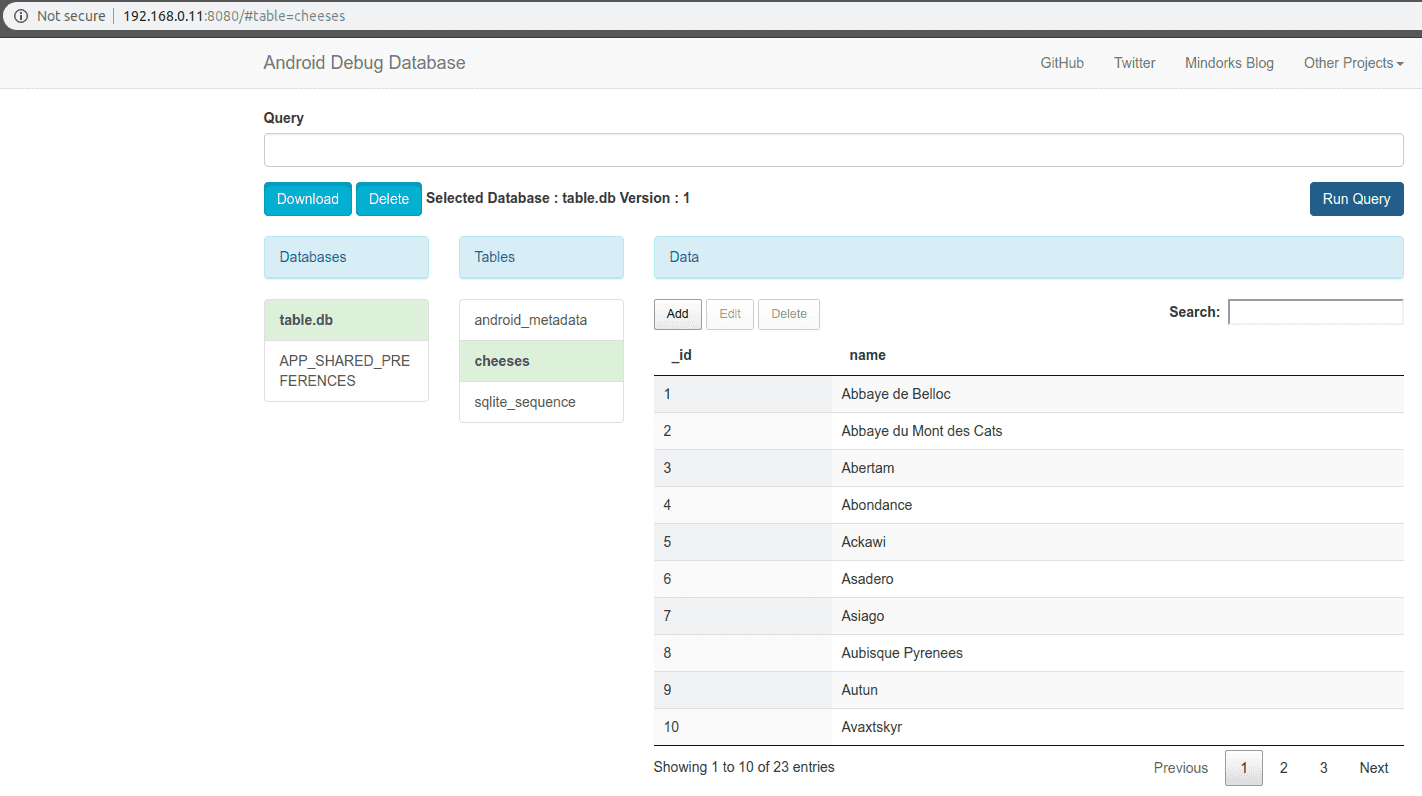
- #Sqlite debug with db browser for sqlite how to#
- #Sqlite debug with db browser for sqlite update#
- #Sqlite debug with db browser for sqlite full#
- #Sqlite debug with db browser for sqlite android#
- #Sqlite debug with db browser for sqlite windows#
In the next chapters we will start using SQLModel to interact with the database, and we will continue to use DB Browser for SQLite at the same time to look at the database underneath. This will be useful to verify the data in the database is looking correclty, to debug, etc.
#Sqlite debug with db browser for sqlite how to#
We also saw how to use it to write some SQL directly to the SQLite database. If you need to trace/log you could use EF Tracing provider. When debugging you could use IntelliTrace to see commands sent to the database. For updates it is not possible to access this information. In case db was an ObjectContext instance you would use. We saw how to interact with SQLite databases in files using DB Browser for SQLite in a visual user interface. var sql db.Entities.ToString () where db is an DbContext instance.
#Sqlite debug with db browser for sqlite full#
Of course, you can also go and take a full SQL course or read a book about SQL, but you don't need more than what I'll explain here on the tutorial to start being productive with SQLModel. And you don't have to be a SQL expert to use SQLModel.īut if you are curious and want to get a quick overview of SQL, I recommend the visual documentation from SQLite, on SQL As Understood By SQLite. I will keep showing you small bits of SQL through this tutorial. You will see the "execution finished successfully" message.Īnd if you go back to the Database Structure tab, you will see that you effectively created again the same table. Write the same SQL that was generated in the previous step:ĬREATE TABLE "hero" ( "id" INTEGER, "name" TEXT NOT NULL, "secret_name" TEXT NOT NULL, "age" INTEGER, PRIMARY KEY ( "id" ) ) This time, if you see the dialog to create a new table, just close it by clicking the Cancel button. database.db file in your project directory. Now, to see how is it that SQL works, let's create the table again, but with SQL.Īnd delete that. You will see again the same table we created. Now click on Open Database to open the database again, and select the same file. Confirm the Table ¶įirst click the button Close Database to close the database. The only step left is to click Write Changes to save the changes to the file.Īfter that, the new table is saved in this database on the file. Now you will see that it shows up in the list of Tables with the columns we specified. There could be more SQL statements in the same SQL string. It also has the semicolon " " that marks the end of the SQL statement. This is the end of the SQL table, with the final parenthesis " )".The PRIMARY KEY of all this is the id column.This one doesn't have NOT NULL, so it can be NULL. The secret_name column, another TEXT, also NOT NULL.The name column, a TEXT, and it should always have a value NOT NULL.This is declared as the primary key at the end. Also notice that the columns for this table are declared inside the parenthesis " (" that starts here. Test Applications with FastAPI and SQLModelĪlternatives, Inspiration and ComparisonsĬREATE TABLE "hero" ( -(1) "id" INTEGER, -(2) "name" TEXT NOT NULL, -(3) "secret_name" TEXT NOT NULL, -(4) "age" INTEGER, -(5) PRIMARY KEY ( "id" ) -(6) ) -(7) sqlitebrowser (databases/sqlitebrowser) Updated: 1 year, 2 months ago Add to my watchlist 1. Read Heroes with Limit and Offset with FastAPIįastAPI Path Operations for Teams - Other Models
#Sqlite debug with db browser for sqlite update#
Update and Remove Many-to-Many Relationships x, -no-browser: do not open a web-browser when sqlite-web starts.Create a Table with SQLModel - Use the EngineĪutomatic IDs, None Defaults, and Refreshing DataĬreate Data with Many-to-Many Relationships The syntax for invoking sqlite-web is: $ sqlite_web /path/to/database-file.db There is an option to automatically create columns for any unrecognized keys in the import file: The import tab supports importing CSV and JSON files into a table.

#Sqlite debug with db browser for sqlite android#
The query results are displayed in a table and can be exported to either JSON or CSV: As an Android developer, we all must have used the SQLite database for storing some data on our local device i.e. The query tab allows you to execute arbitrary SQL queries on a table. Links in the table header can be used to sort the data: The following is a random assortment of techniques used by the SQLite developers to trace, examine, and understand the behavior of the core. The content tab displays all the table data. From this page you can also create, rename or drop columns and indexes. After downloading and installing the db browser for sqlite, every attempt to start the browser results in this system erro.
#Sqlite debug with db browser for sqlite windows#
The structure tab displays information about the structure of the table, including columns, indexes, and foreign keys (if any exist). Hi, I'm new to sqlite and want to use it on windows forms application. The index page shows some basic information about the database, including the number of tables and indexes, as well as its size on disk: * Columns (yes, you can drop and rename columns!) Works with your existing SQLite databases, or can be used to create new databases. Sqlite-web is a web-based SQLite database browser written in Python.


 0 kommentar(er)
0 kommentar(er)
